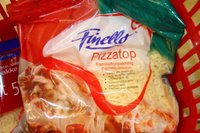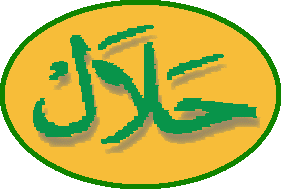This article taken from this BBC page
'Have some of this, it's good.' The Norwegian hands you an open-faced sandwich with a slice of something reddish-brown, 'It's Brunost - brown cheese.'
It doesn't look like cheese, you think, but you take a bite anyway.
'No way is this cheese!', you exclaim.
And you would be perfectly correct. Strictly speaking it isn't, but next to cross country skiingtrolls there are few things more Norwegian than an open-faced sandwich of Brunost.
Curds and Whey
General cheesemaking, all over the world, consists of separating the curds from the whey, and making some sort of cheese from the curds. The whey is then flushed down the drain or used as cattle feed. More recently, whey proteins have become popular as an ingredient in health food and dietary supplements for body-builders. However, in some parts of the world it has been considered good food for centuries. In Italy, for example, it is used to make ricotta, while in Norway it is used to make Brunost.
The upshot of this is that while 'real' cheeses are made only from the curds, ricotta, Brunost and similar, although often called cheeses, are technically whey-based dairy products.
History
For more than 300 years Norwegian farmers have made cheeses from cow's milk and goat's milk and turned the leftover whey into different kinds of foodstuffs. Many strange concoctions existed and some of these are still available, regionally, today.
The simplest process was to just boil out most of the water from the cow's whey, and shape the remainder into a sweet, low-fat, pale reddish brown 'cheese'. This is the most basic type of brown cheese and is simply called Mysost, or 'whey cheese'. By mixing in cream, or using goat's milk, or a combination of goat's and cow's milk, and/or by leaving more water in the mix, all of today's brown cheeses came into existence1.
Making Brunost
Brunost remains a very popular dairy product. Annual production is approximately 12 million kilograms, or almost 4kg per Norwegian. Of this amount, 50% is Gudbrandsdalsost, 30% is Fløtemysost, and 8 - 10% is Ekte Geitost. The remainder is made up of other varieties and small scale production sold straight from the farm.
The first step in the making of Brunost is removing the curds. The whey must not contain any remains of curds, rennet or lactic bacteria so today it is often pasteurised and centrifuged. Then milk and cream is added to the whey and it is boiled until it becomes a thick brown mass (in industrial production the initial dehydration is done by methods other than boiling). The brown colour appears at the end of the process when the mass reaches about 100°C. Several factors influence the colour, but a darker colour indicates a more pronounced taste, and a larger risk of it getting burned. The next step is to cool the mass quickly to about 80°C while stirring vigourously so the sugar forms small crystals with an even distribution.
Even though no preservatives are added, Brunost can be kept in the fridge for about four months, and up to a year at -8°C2. At lower temperatures the water freezes and ruins the 'cheese'.
Variations
Brunost is the generic name for lots of different products, but ask the average Norwegian and they will tell you either that their particular preference is the real Brunost, or that Brunost is a misnomer and that it's really Raudost (literally 'red cheese').
This entry will treat all the different types alike and not play favourites3. Brunost taste comes mainly from caramelised lactose and hence the product is sweet, with a hint of caramel, and tastes nothing like cheese at all. The use of goat's milk in some types adds another incomparable taste that takes a little getting used to. The texture of Brunost is cheeselike, but because of its high sugar content it is much stickier than real cheeses.
Types of brown cheese include:
Prim
With a water content above 30%4, making it spreadable, Prim is almost a Brunost cousin. The taste is pure Brunost, however, and in some dialects Prim is the word for all Brunosts.
Ekte Geitost
Ekte Geitost is made with whey, milk and cream from goats. It has the most pronounced taste of all the Brunosts. The name translates into real (or genuine) goat cheese. There is a small export of Ekte Geitost.
Gudbrandsdalsost
Gudbrandsdalsost is named after the valley in Norway where it was first produced for export outside the area. It uses whey, milk and cream from cows, and adds goat's milk. There is some production for export, and it is sold as Gudbrandsdalen in other Scandinavian countries, Norgold in Germany, and Ski Queen in UK, North America and Australia.
Ski Queen is one of the few varieties of brown cheese that includes preservatives in its manufacture.
Fløtemysost
Cream Whey Cheese made from whey, milk and cream from cows. It has a milder taste than both Ekte Geitost and Gudbrandsdalsost.
Using Brunost
The main use of Brunost is on sandwiches, like the open-faced sandwich mentioned at the beginning. It is also used in sauces and as an accessory to lutefisk; but, these are minor compared to the use on slices of bread, rolls and Norwegian waffles.
To get nice slices it is essential to have a cheese plane5 as it is almost impossible to use a knife on Brunost in a controlled manner, due to its sticky texture.
1 Except the weird and sacrilegious versions involving chocolate and other foreign substances.
2 Source: Norwegian Encyclopaedia: Kunnskapsforlagets Store Norske Leksikon.
3 The real Brunost is the Gudbrandsdalsost!
4 The firm Brunosts have a water content of 25% or less.
5 Also called 'cheese slicer', invented and patented in 1925 by Thor Bjørklund.
 False cheese?! Ever heard of it? Probably not, and there is a reason for it. It is is likely to kill you! Why; well - it is the result of profit maximising, the process in which CEO's slowly but surely is doing this planet in, and all life as we know it!
False cheese?! Ever heard of it? Probably not, and there is a reason for it. It is is likely to kill you! Why; well - it is the result of profit maximising, the process in which CEO's slowly but surely is doing this planet in, and all life as we know it!







